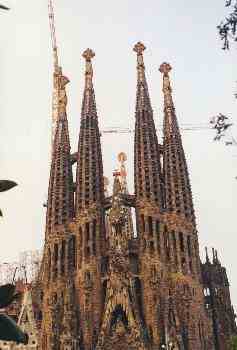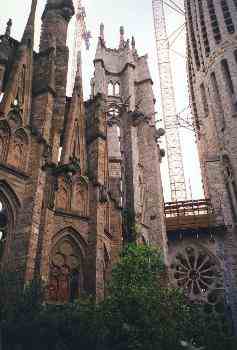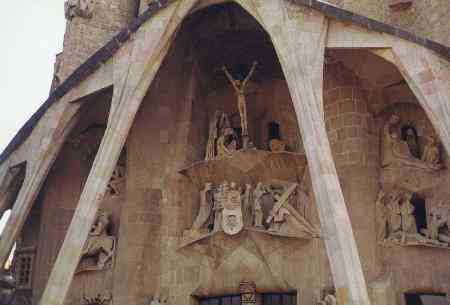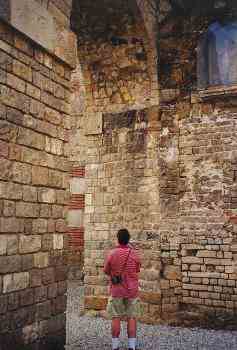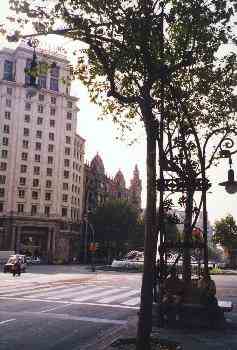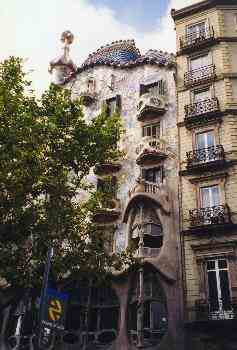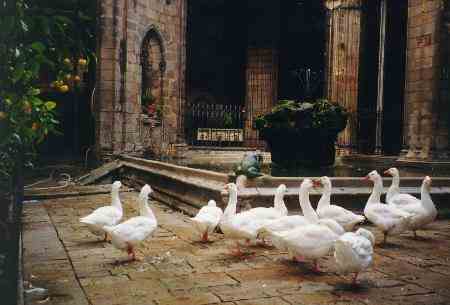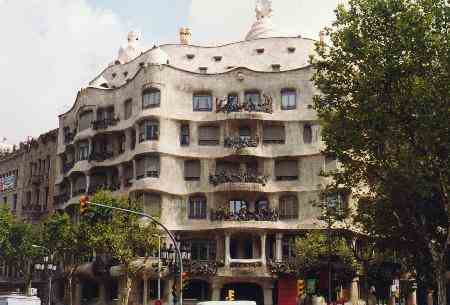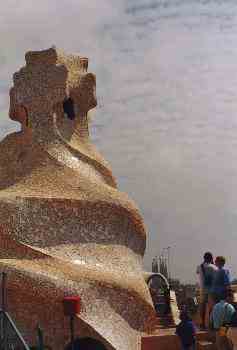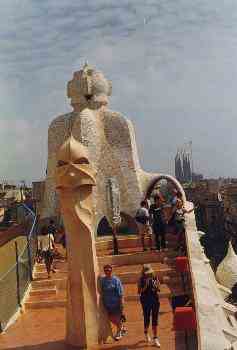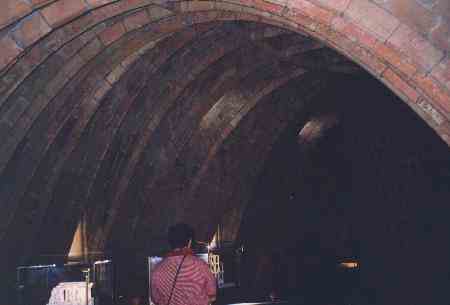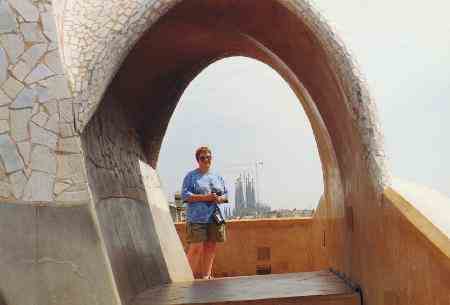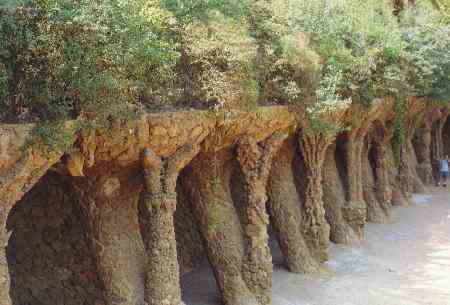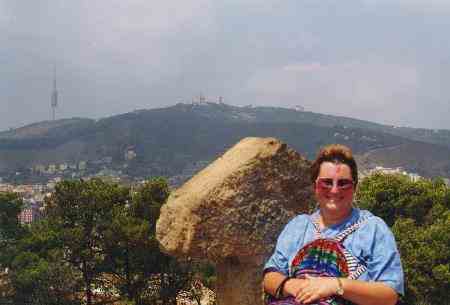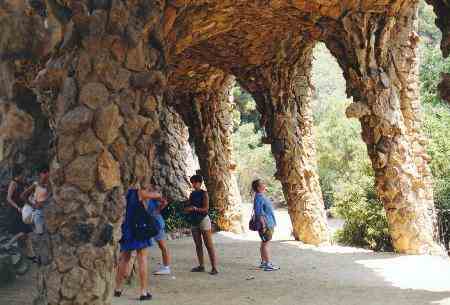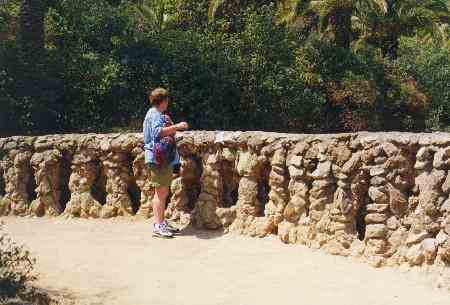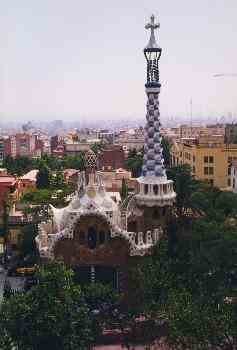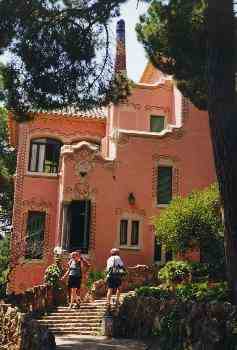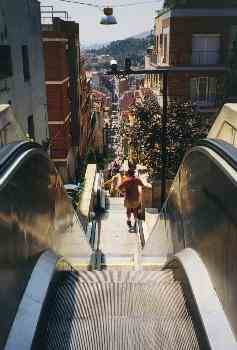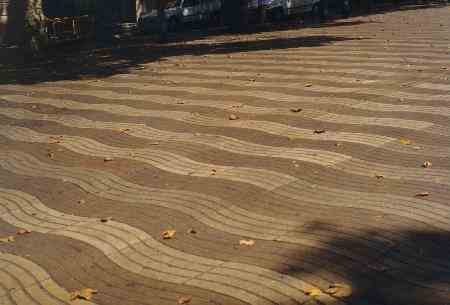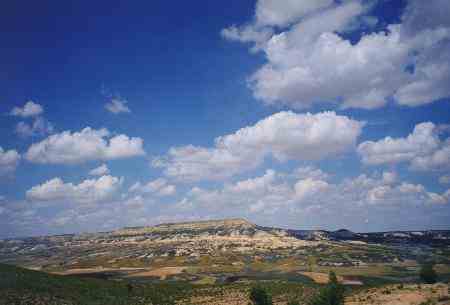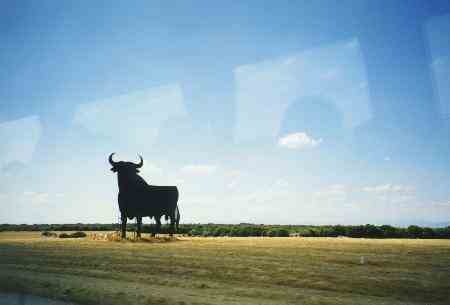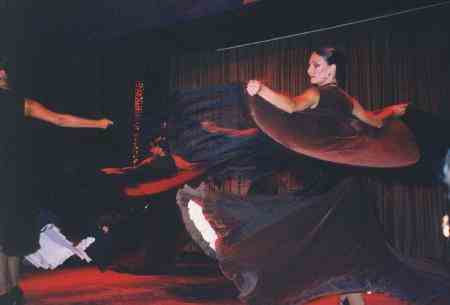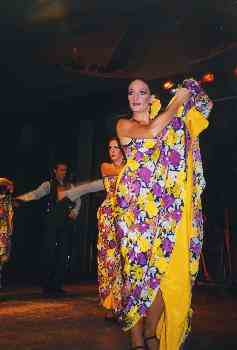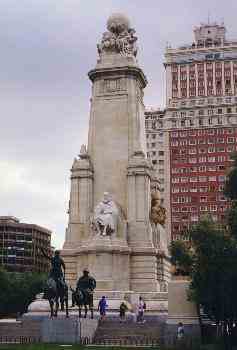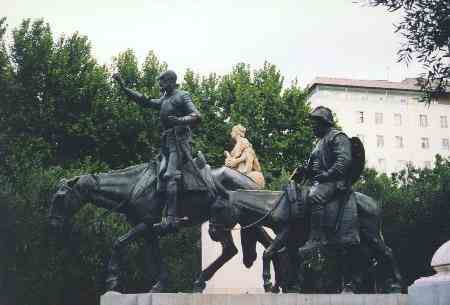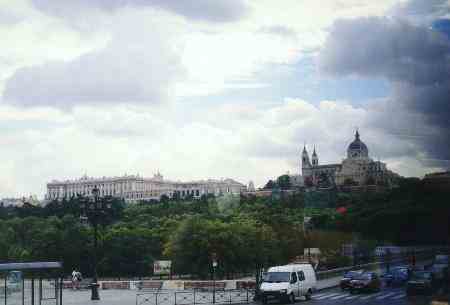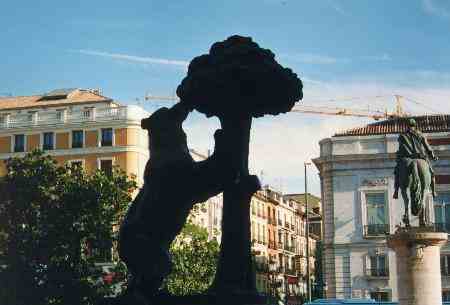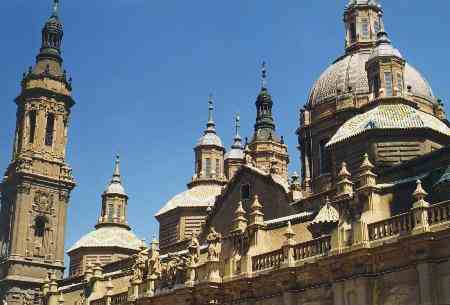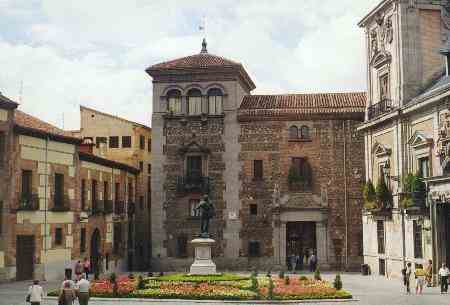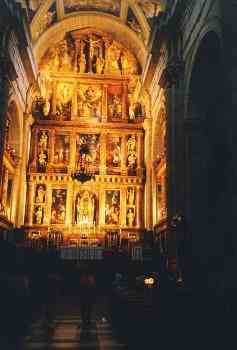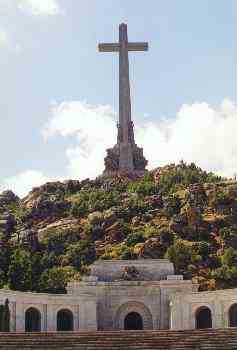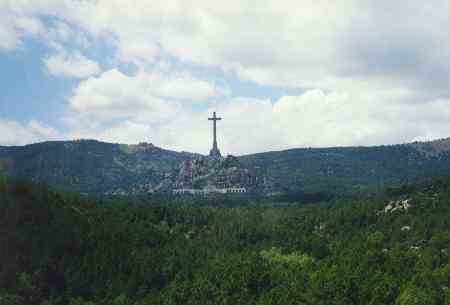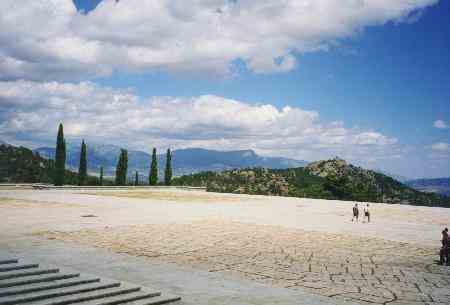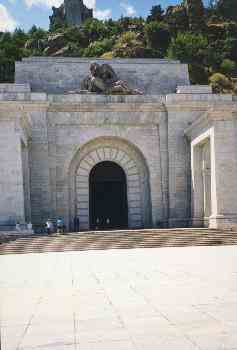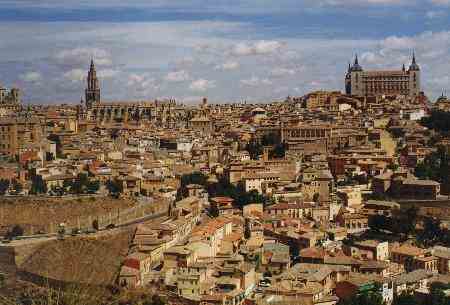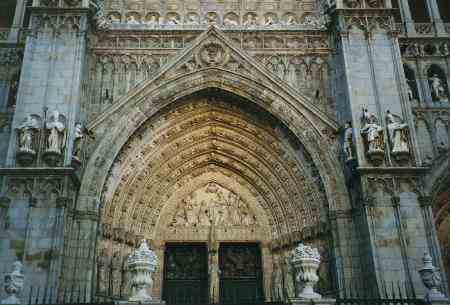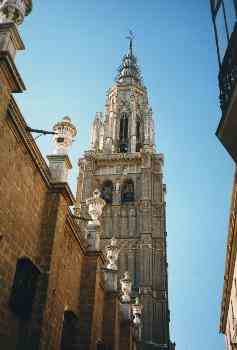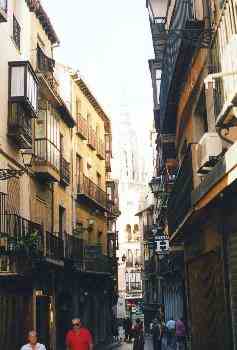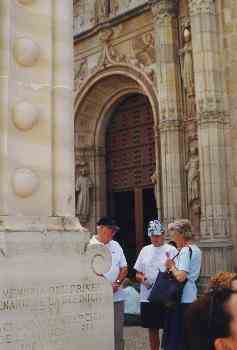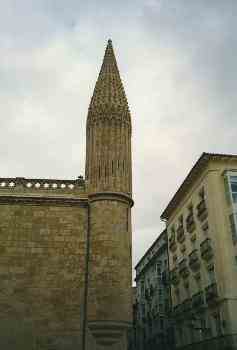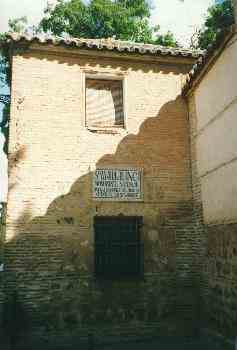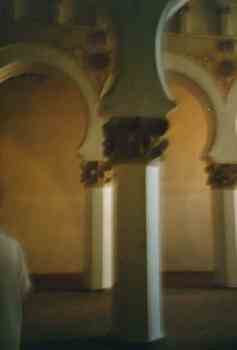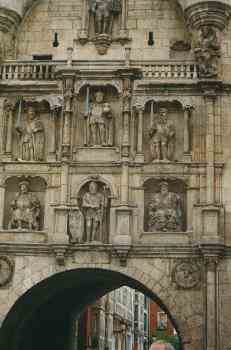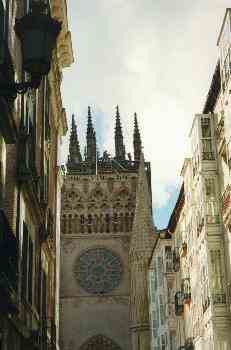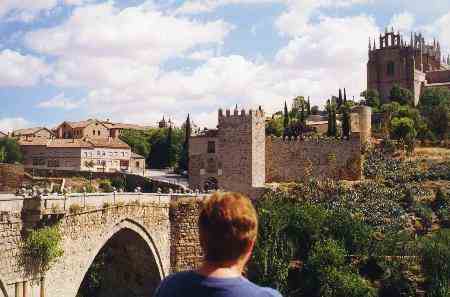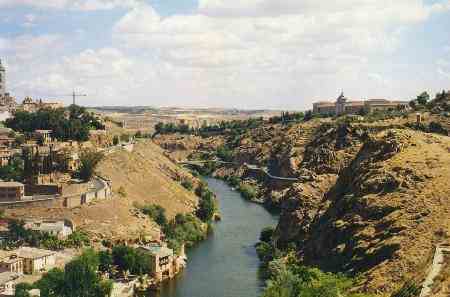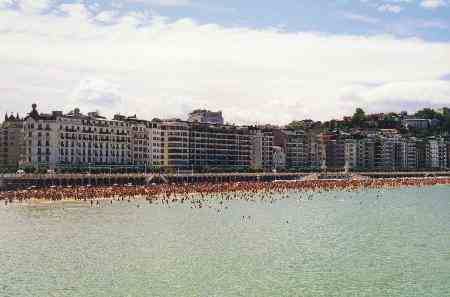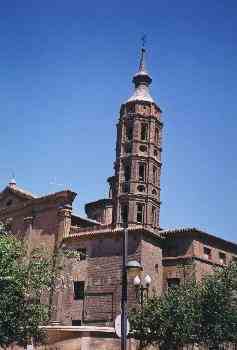In June-July-August-September-October 1999 we went on our first around the world trip.
(99-days - Melbourne - Bangkok - Frankfurt - Moscow - St. Petersburg - Stockholm - Helsinki - Copenhagen - Malaga - London -
Western Europe - UK - Egypt - Jordan - Israel - Greece - New York - Las Vegas - Melbourne).
Our Western European tour crossed from the French Riviera into Spain.
(We had spent a week on the Costa del Sol in Spain earlier on this RTW trip).
Barcelona
|
|
Four of the eight towers of the Sagrada Familia church in Barcelona. Construction of architect Gaudi's principal work and Barcelona's most famous attraction was started in 1882. Completion is still a long way off. |
|
Today there are 8 towers, all over 100 metres high. Gaudi had intended to build 18, representing the 12 Apostles, the 4 Evangelists and the mother of God, with the tallest tower (170 metres) standing for her son.
|
|
||||||
|
|
Some of the intricate sculptures on the walls of the Sagrada Familia church. There were snails, lizards, snakes, turtles (representing the slowness of construction), nativity scenes etc. |
||||||
|
Bible scenes sculptured on the walls of the Sagrada Familia church in Barcelona. |
|
|
|
|
Some remains of old Roman walls near Barcelona cathedral.
|
|
|
A typical Barcelona street scene. Note the typical curved lamppost/seat and the cut off corner where the building is situated.
|
|
|
|
|
The fascinating façade of a Gaudi designed building in Barcelona.
|
|
|
|
Margaret found the turtle appealing. It was on one of the cloister walls of the old cathedral in Barcelona.
|
|
Geese (used as watchdogs) at the old cathedral in Barcelona.
|
|
||||||
|
|
La Pedera (or Mila) house in Barcelona. An excellent example of Gaudi's buildings. Its sinuous lines continue to inspire painters and poets. |
||||||
|
Convoluted chimney stacks on the staggered roof terrace of the Mila house. |
|
|
|
|
Twisted chimney and ventilation stacks at Gaudi's Mila house of nearly human shapes that often bring to mind medieval warriors.
|
|
|
Inside the Mila house. The garrets are formed by a succession of 270 catenary arches of flat bricks.
|
|
|
|
|
On the roof terrace of the Mila house with the Sagrada Familia church in the background.
|
|
|
|
At Park Guell in Barcelona. Gaudi designed cloisters which look like something out of the Fred Flintstone bedrock series.
|
|
At Park Guell in Barcelona. The park was named after Gaudi's patron, the wealthy banker, Eusebi Guell.
|
|
||||||
|
|
At Park Guell in Barcelona. |
||||||
|
At Park Guell in Barcelona. |
|
|
|
|
At Park Guell in Barcelona.
|
|
|
At Park Guell in Barcelona. Interesting Gaudi designs.
|
|
|
|
|
At Park Guell in Barcelona. The "gingerbread house" where Gaudi lived from 1906 until his death in 1926. He was killed when he was hit by a tram.
|
|
|
|
Park Guell in Barcelona was on the top of a hill. A series of outdoor escalators were only a minor help in getting to the top.
|
|
Actually a flat footpath along part of Las Ramblas, Barcelona's famous boulevard. The curved paving creates an optical illusion of depth.
|
|
||||||
|
|
A swing bridge on the floating footway at the Port Vell marina near the port of Barcelona. This previously run down area had been rebuilt just prior to the Barcelona Olympics of 1992.
|
|
|
Dry but interesting Spanish countryside on the way from Barcelona to Madrid. It was not unlike Australian scenes. |
|
|
|
A typical bull advertising sign alongside a Spanish freeway. There are 88 of these in Spain. They are the symbol of the company producing Spanish brandy but carry no writing these days as the advertising of alcohol is now banned in Spain.
|
Madrid
|
|
A flamenco concert in Madrid. |
|
A flamenco concert in Madrid.
|
|
||||||
|
|
The Cervantes memorial in Madrid. The Spanish novelist and playwright. He injured his left hand in the sea battle of Lepanto in 1571. It is covered by a cloak in this statue. He was a contemporary of Shakespeare and he is dressed like him in this statue. |
||||||
|
Bronze horsemen in front of the Cervantes memorial in Madrid. |
|
|
|
|
The royal palace (Palace Real) and Madrid Cathedral. The palace is now only used for ceremonial occasions. The palace is built on the site of an old castle. The people of Madrid are called Gattos (cats) because they took the castle from the Moors by climbing up the walls silently like cats. People feed stray cats because of this.
|
|
|
|
The bear on the ground starting to climb a tree is the symbol of Madrid. Madrid started as a hunting area for Spanish royalty. As the rulers spent more and more time here, government offices were built and eventually it became the capital of Spain.
|
|
El Escorial near Madrid.
|
|
El Escorial was/is a monastery/palace built by Phillip II to commemorate Spanish victories. It was built from 1562 to 1584. It contained the first research library built since that at Alexandria. |
|
Courtyard gardens at El Escorial. El Escorial is built around an enormous basilica.
|
|
||||||
|
|
The altar piece in the cathedral. The basilica once had 8 organs in it. Now there are only 4. They play 1, 2 or 4 at a time. Never 3 because of an echo effect. The king's and queen's chambers had doors into the basilica so that they were never far from the altar. |
||||||
|
|
Tombs of Spanish royalty and nobility in a very impressive octagonal shaped crypt under the main altar of the basilica. The tombs were in stacks on the walls.
|
|
Valley of the Fallen near Madrid
|
|
The massive 130 metre high cross at the Valley of the Fallen. This is a memorial to those killed in the Spanish Civil War. |
|
A distant view of the cross at the Valley of the Fallen. The mountain below has been hollowed out to form a massive basilica that was deliberately built only slightly shorter than St. Peters in Rome
|
|
||||||
|
|
The forecourt of the basilica at the Valley of the Fallen. |
||||||
|
|
The entrance to the basilica at the Valley of the Fallen. Finished in 1959 the memorial took 18 years to build. The altar is directly below the foot of the massive cross. The basilica is also a mausoleum. There are lots of tombs in the walls behind the tapestries and under the floor.
|
|
Toledo
|
|
A view of Toledo, an historic Mediaeval walled city near Madrid. El Greco painted a lot of his works here. Toledo was once the capital of Spain, but since 1561 Madrid has been the capital. |
|
The entrance to Toledo Cathedral. Toledo Cathedral, which was started in the 12th century, took 300 years to build. It has mixture of Gothic and Baroque styles.
|
|
||||||
|
|
The steeples of Toledo Cathedral in the distance. |
||||||
|
The narrow alleyways of Toledo. |
|
|
|
|
A Toledo scene. Marzipan was created at Toledo. It was a long lasting food that was stored and available in sieges.
|
|
|
A Toledo scene. |
|
|
|
|
St. Maria la Blanca, now a Jewish synagogue in Toledo. It was built in the 12th century by Moslems (who were excellent bricklayers and stonemasons) for the Jews and later became a Christian church.
|
|
|
|
Inside St. Maria la Blanca. Note the Islamic columns. The synagogue has a Christian layout and a gilded wooden altar piece. |
|
Elaborate sculptures on a Toledo building.
|
|
||||||
|
|
Toledo. |
||||||
|
This Toledo bridge had a very large arch for the times. |
|
|
|
|
Toledo was in a superb strategic position.
|
|
Burgos
The Spanish city of Burgos with Burgos Cathedral in the background. It is the third largest cathedral in Spain. El Cid is buried in a tomb here.
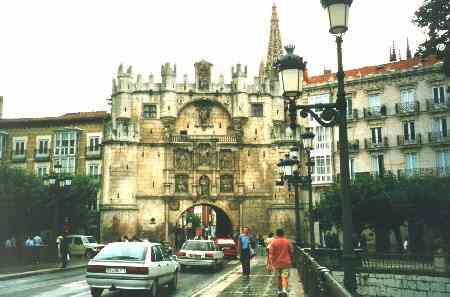
San Sebastian
|
|
A few swimmers in the Atlantic Ocean at San Sebastian.
|
|
|
The tower of the Cathedral of the Pillar in Saragossa in Spain
|
|||||||

